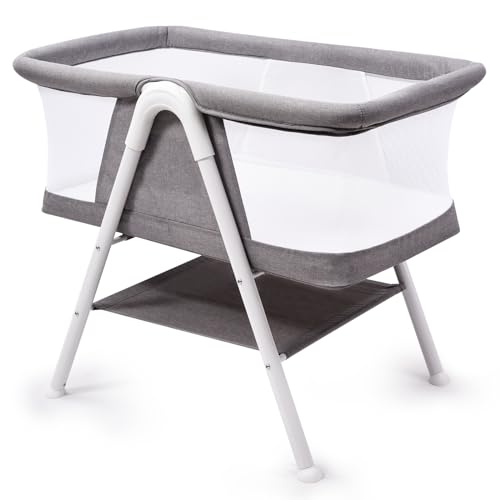Tots and Cots: A Comprehensive Guide for Parents
When it concerns making sure a safe and comfortable sleeping environment for babies and young children, the options moms and dads make-- varying from cribs to cots-- can considerably affect their well-being. Today's article dives deep into the intricacies of picking the very best sleeping plans for tots, stressing safety, design, functionality, and how these options develop as a kid grows.
Comprehending Tots and Cots
Tots usually refer to young kids, particularly toddlers aged between 1 to 3 years, while cots are the sleeping plans particularly developed for babies and young children. The appropriate sleeping devices for this age group includes different types of cots, cribs, and young child beds.
Kinds of Cots
Various designs exist to fulfill the diverse needs of both parents and kids. Below is a list laying out the most typical types of cots readily available:
Standard Crib
- A conventional crib is designed for babies and typically includes sides that can be gotten used to various heights.
Convertible Crib
- This type of crib can convert into a young child bed, daybed, or full-sized bed as the child grows, making it a long-term investment.
Portable Crib
- Also called travel cots, these are lightweight and quickly collapsible, ideal for traveling or smaller sized home.
Co-Sleeper
- A co-sleeper crib attaches to the side of the moms and dads' bed, permitting simple access while guaranteeing the baby has a separate and safe sleeping space.
Young child Bed
- A young child bed is a little bed that resembles a standard bed however is developed specifically for young children, usually featuring security rails.
Mini Crib
- Mini cribs are smaller than standard cribs, making them an excellent choice for tight areas, however they are ideal for babies only.
Security Considerations
Guaranteeing security is paramount when selecting a cot for a kid. Here are crucial security guidelines moms and dads need to consider:
- Check for CPSC Certification: Ensure that the cot follows the Consumer Product Safety Commission (CPSC) standards.
- Avoid Drop-Sides: Cots with drop-sides have actually been connected to safety dangers, and the current safety policies forbid them.
- Use a Firm Mattress: A firm mattress decreases the risk of suffocation and should fit snugly within the cot.
- Keep Bedding Simple: Use a fitted sheet and prevent pillows, comforters, and stuffed animals that can pose suffocation risks.
- Follow Weight and Age Guidelines: Ensure the kid has not surpassed the cot's weight limit and is still within the recommended age.
Transitioning from a Cot to a Toddler Bed
The shift from a cot to a young child bed can be a psychological turning point for both moms and dads and children. Here are steps to alleviate the transition:
Timing
Deciding when to shift can be subjective, however it's generally suggested to make the switch in between 18 months and 3 years, based upon aspects like:
- Physical Ability: If the child is climbing out of the cot.
- Potty Training: Consider transitioning if the kid is toilet training and requires easier gain access to.
- Behavior: Exhibiting indications of maturity, such as following directions or expressing a desire for independence.
Tips for Making the Transition Smooth
- Include Your Child: Let the kid select their brand-new bed linen or bed design to impart excitement about the change.
- Keep Routine Consistent: Maintain the child's bedtime regimen to offer comfort throughout this duration of modification.
- Explain the Change: Discuss the shift to a young child bed favorably, making it seem like a terrific adventure.
- Precaution: Place the bed against the wall or usage bed rails to prevent falling throughout sleep.
Picking the Right Bed
When selecting a toddler bed, moms and dads need to consider elements like:
- Height: Low-profile beds are ideal for young children who may fall out throughout sleep.
- Sturdiness: Ensure the bed can hold up against active play as well as sleep.
- Design and style: Choose a style that complements the kid's room and is interesting the child.
Selecting the ideal cot for your little one can be a complicated procedure, however comprehending the alternatives offered, crucial safety considerations, and the right timing for transitioning to a toddler bed can make this journey much easier for moms and dads. Best Baby Cot and effort into these choices will make sure that your child has a safe, comfortable, and nurturing sleep environment.
FAQs
1. What is the difference in between a cot and a crib?
- A cot is normally a smaller bed developed for younger young children, while a crib is a bigger bed that is normally ideal for infants approximately 3 years of ages.
2. When should I move my kid from a crib to a young child bed?
- The transition time is generally between 18 months and 3 years; this modification is based upon the kid's physical abilities and behavioral indications.
3. How can I guarantee my kid is safe while sleeping?
- Always abide by security requirements, utilize a firm bed mattress with a basic bed linen plan, and monitor the cot's weight limit.
4. What should I do if my kid attempts to climb out of the cot?
- If your child is climbing out, it may be time to think about transitioning to a young child bed to prevent falls.
5. Can I use the exact same bed mattress when transitioning?
- Typically, it is best to change the crib bed mattress with one that specifies to the toddler bed. Ensure it fits comfortably and adheres to security requirements.
By considering these aspects, moms and dads can model healthy sleep habits and supply their children with a secure environment that promotes relaxing sleep. Investing in quality sleeping arrangements will add to the kid's general development and joy.

